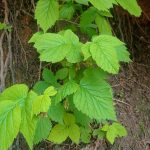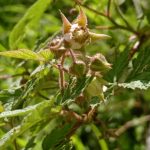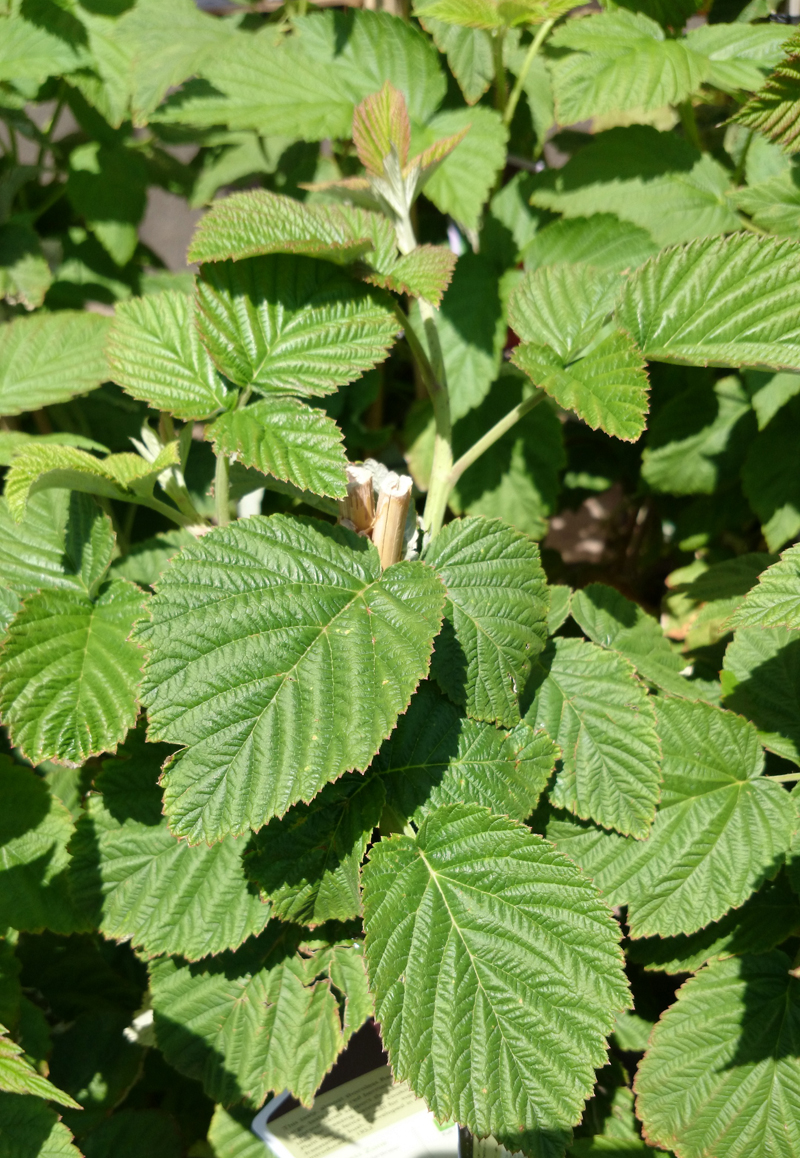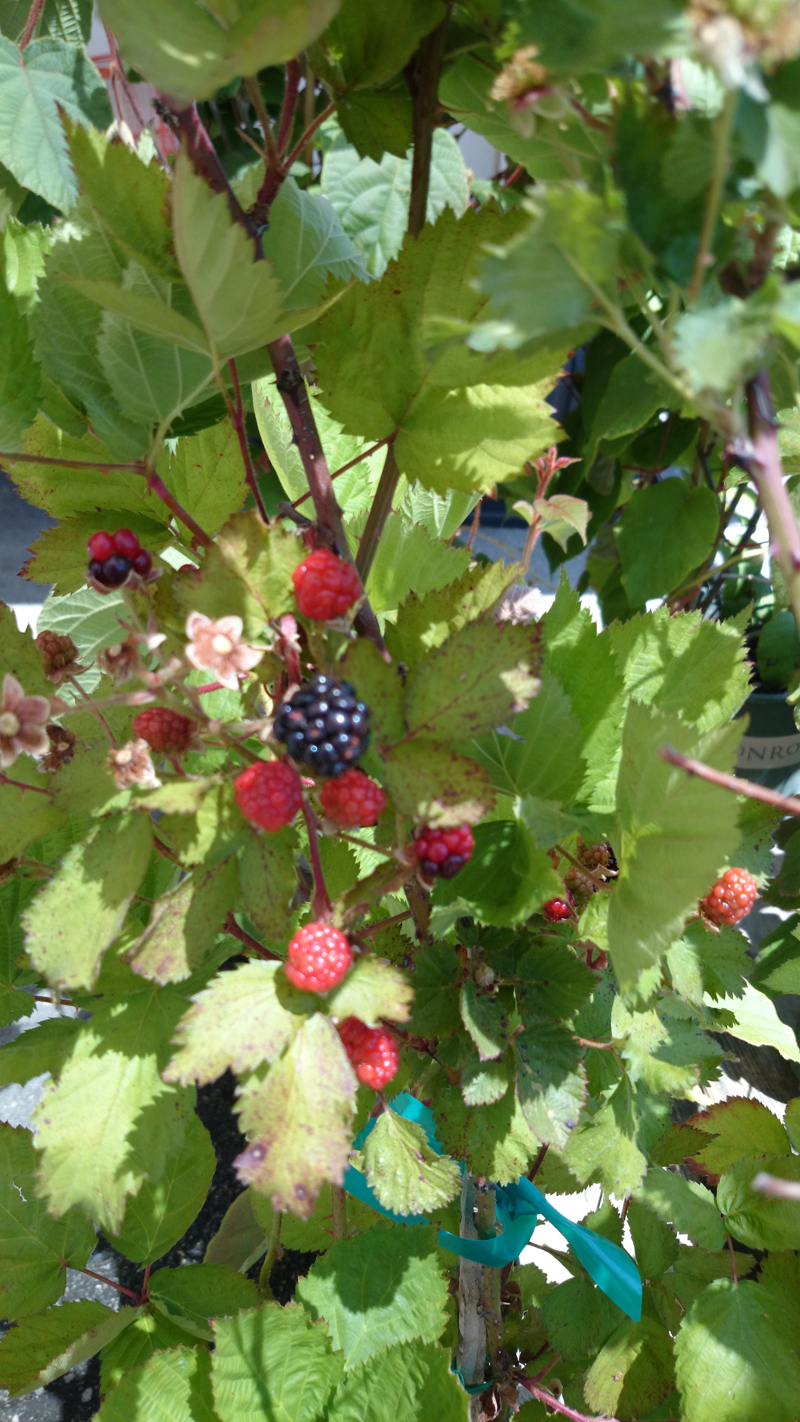|
Rubus idaeus subsp. strigosus (Michx.) Focke, Abh. Naturwiss. Vereins Bremen 13:473. 1896 (syn: Batidea acalyphacea Greene; Batidea arizonica Greene; Rubus carolinianus Rydb.; Rubus idaeus var. canadensis Richardson; Rubus idaeus var. gracilipes M.E.Jones; Rubus idaeus var. melanolasius (Dieck ex Focke) R.J.Davis; Rubus idaeus var. melanotrachys Focke ex Fernald; Rubus idaeus var. strigosus (Michx.) Maxim.; Rubus melanolasius Dieck; Rubus neglectus Peck; Rubus strigosus Michx.; Rubus strigosus var. acalyphaceus (Greene) L.H.Bailey; Rubus strigosus var. arizonicus (Greene) Kearney & Peebles; Rubus strigosus var. canadensis (Richardson) House);
.
Alaska, USA (Arizona, California, Colorado, Connecticut, Delaware, Iowa, Idaho, Illinois, Indiana, Massachusetts, Maryland, Maine, Michigan, Minnesota, Missouri, Montana, North Carolina, North Dakota, Nebraska, New Hampshire, New Jersey, New Mexico, Nevada, New York, Ohio, Oklahoma, Oregon, Pennsylvania, Rhode Island, South Dakota, Tennessee, Utah, Virginia, Vermont, Washington State, Wisconsin, West Virginia, Wyoming), Canada (Alberta, British Columbia, Labrador, Manitoba, New Brunswick, Newfoundland, Nova Scotia, Northern Territories, Nunavut, Ontario, Prince Edward Isl., Quebec, Saskatchewan, Yukon), St. Pierre et Miquelon, Mexico (Coahuila, Mexico State, Michoacan, Nuevo Leon, Tamaulipas, Chihuahua, Sonora, Veracruz) as per Catalogue of Life;
.
Rubus strigosus, the American red raspberry or American raspberry, is a species of Rubus native to much of North America. It has often been treated as a variety or subspecies of the closely related Eurasian Rubus idaeus (raspberry or European raspberry),[1][2] but currently is more commonly treated as a distinct species.[3][4][5] R. strigosus is a perennial plant which bears biennial stems (“canes”) from the perennial root system. In its first year, a new stem grows vigorously to its full height of 0.5–2 m, unbranched, and bearing large pinnate leaves with three or five (rarely seven) leaflets; normally it does not produce any flowers. In its second year, the stem does not grow taller, but produces several side shoots, which bear smaller leaves with three leaflets. The flowers are produced in late spring on short racemes on the tips of these side shoots, each flower with five white petals 4–7 mm long. The fruit is 1–1.2 cm diameter, red, edible, sweet but tart-flavored, produced in summer or early autumn; in botanical terminology, it is not a berry at all, but an aggregate fruit of numerous drupelets around a central core.[2][15]
Many of the commercial raspberry cultivars grown for their fruit derive from hybrids between R. strigosus and R. idaeus; see Raspberry for more details. (From Wikipedia on 28.9.15) Rosaceae Fortnight: Rubus idaeus var. strigosus from California-GSSEP107/107 : 1 post by 1 author. Attachments (2) Rubus idaeus var. strigosus
Commonly cultivated raspberry with red fruits hollow at base.
Photographed from California .    Identification request of this Rubus sp. From kupwara, J&K: 3 images. Photo credits: Adil.abdullah Could not find a match as per comparative images at Rubus What are the species reported from your area? I have checked all Rubus sp of our area.. Couldn’t find any match Can you provide the list? Rubus alceifolius Rubus caesius
Rubus idaeus
Rubus niveus
Rubus saxatilis
Rubus elipticus
Rubus ulmifoilus. Out of these, I think it is close to Rubus idaeus subsp. strigosus (due to small petals) as per GBIF– images one, two, three, POWO, Go Botany, Wild flower My guess was R.idaeus If you had given earlier, my work would have been reduced. Sorry sir… Most of my specimens were corrected by experts here ..so i thought this plant Belongs to different species…. You should have said R.idaeus ? Or R.idaeus for validation or like that, when you have any doubts about id. For future plants.. I will do the same .
Genetic and genomic resources for Rubus breeding: a roadmap for the future | Horticulture Research: Thanks a lot for sharing sir, checked. I have to capture and collect my species perfectly.
. References: |
Rubus idaeus subsp. strigosus
Updated on December 24, 2024


